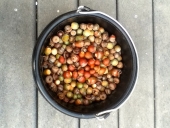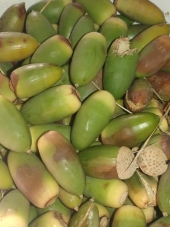I tried searching on here and I don't know if I was just using the wrong search terms or what, but I was surprised by the lack of results I was able to turn up for this question...
Basically, I am considering planting more oak trees at some point in the nearish future and I know different oak species produce acorns with differing flavors, quality, size, and quantity. Obviously it will vary from tree to tree as well, and location to location and based on soil and probably weather, etc... but just as a general rule of thumb I wanted to get a feel for which species people prefer.
I have read a few places that white oaks tend to have less tannins than reds, which I wouldn't have thought of but makes sense.
I found a decade old question on Quora where one answer mentioned the book "A Sanctuary of Trees" saying that chinquapin oaks produce sweet acorns- and apparently suggests calling them sweet oaks instead.
Another answer said (with a lengthy answer to back up their opinion) that the best acorns to eat in North America come from Quercus michauxii (cow oak? I admit, I don't think O have ever heard of cow oak.). That poster claimed them to have the largest and sweetest acorns of any white oak they were aware of.
(If you want to see the full answers in their original form, see here:
https://www.quora.com/Which-types-of-oak-trees-have-the-best-acorns-to-eat )
And I saw another website which posted a list of about 20 of what they claimed are some of the lowest tannin acorns.... :
https://nutgeeks.com/best-tasting-acorns/
Ideally, I would like to hear more specific experiences and opinions from people who have tried specific species though.
Plus, I trust you Permies more than randos out on the wild web.
Aside from just the flavor of the acorns, I have some follow up questions to consider:
- Acorn size
- Production quantity
- Are these acorns also good for animal feed? I assume they would be, but want to make sure I am not overlooking something. Is there some reason that a different variety of oak would be better to plant in an area where I might plan to have pigs forage eventually once the trees are big enough?
- How long does it take the tree to start producing significantly? (If you don't know because you just already had them on your land or whatever, obviously that's fine. )

 5
5




 6
6







 3
3




 6
6





 8
8




 4
4




 5
5









